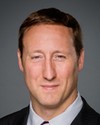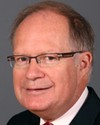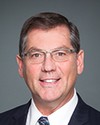Mr. Chair, I will be sharing the last five minutes of my speech with the member for Newmarket—Aurora as well as the member for Barrie.
I would like first of all to recognize the member for Glengarry—Prescott—Russell and the member for Edmonton Centre who have taken on the leadership role and served our country in uniform and continue to serve our country in the House of Commons. Also, on behalf of my constituents and the men and women of the Canadian Forces whom I represent, I would like to thank the Minister of National Defence for his leadership and the excellent work he has done on behalf of our communities.
It is an honour for me to be able to say a few words about the men and women of the Canadian Forces. As the member of Parliament for Westlock--St. Paul, one of the greatest honours I have had has been to represent the men and women of CFB Edmonton as well as the men and women of CFB Cold Lake.
The people, the sailors, soldiers, airmen and airwomen, are the Canadian Forces' most important resources. They are what our military is all about. They are the reason the Canadian Forces make all Canadians so proud. They are the reason the Canadian Forces have earned so much respect from our allies and friends, so much gratitude from Canadians in distress at home and so much appreciation from the likes of the Dutch, the Afghans, the Haitians and many more.
What the Canadian Forces accomplish on our behalf in the name of Canada is simply remarkable. They face situations that most of us can barely imagine. They do it with professionalism, dedication and courage going beyond what is expected. They get the job done and they do it for us.
They put their country and compatriots before self so that we Canadians can be as safe as possible from the many threats of a volatile and unpredictable world.
From the moment this government took office, the Canadian Forces have been one of our highest priorities. Through the Canada first defence strategy we committed to deliver a strengthened and combat capable military, but this commitment is first and foremost a commitment to the men and women of the Canadian Forces. That is why the government is investing the resources needed to expand the size of our military and provide the necessary care for our men and women in uniform.
Despite demographic and retention challenges, the Canadian Forces are growing. Our military's recruitment efforts are delivering very impressive results with recruitment targets having been regularly met for the past few years.
This is in large part a testament to the amazing work that our military accomplishes for Canada. Young men and women from across the country are inspired by the Canadian Forces. They are wondering what it would be like to put on a uniform and represent their country. They are curious to explore the possibilities offered by a military career and are coming through the doors of recruitment centres.
Even some veterans who bring valuable experience with them are coming back to service with a new enthusiasm. The Canadian Forces have enrolled over 6,500 new regular force recruits each of the last three years, and recruitment efforts are on track to achieve our recruiting target once again this year.
During the last fiscal year the regular forces grew by 2,200 personnel, the highest net increase we have seen in several years. Over the past four years the regular force has grown by over 5,000 to reach over 68,000 men and women, close to the 70,000 objective set by this government.
This is great news. The government also remains committed to increasing the size of the reserve force, which is an essential component to the Canadians Forces. The government recognizes the remarkable contribution of reservists. That is why we passed legislation two years ago to protect the civilian jobs of reservists who are called upon to deploy on a Canadian Forces mission.
Reservists currently account for approximately 20% of the Canadian Forces personnel serving in Afghanistan. That is correct, 20%. These men and women take time away from their jobs to participate in this mission. Their contribution is crucial to augment the contingent of regular force personnel that are deployed.
With the Afghanistan mission winding down next year and with the total reserve force steadily growing, the number of active reservists will be drawn down slightly. Vacancies that have been filled by reservists these past years due to the shortage of regular force personnel are now being staffed by regulars again. That is only because of the amazing success of recruiting by the regular force.
Still, as effective as it may be, recruitment is only part of the equation. To expand and strengthen the Canadian Forces also requires efforts to retain the skilled and experienced personnel who are currently serving and efforts to attract the right personnel to fill military occupations that are under stress.
Our military includes an increasing number of personnel eligible for their pension, and recruitment and training for technical trades demands constant attention. That said, the Canadian Forces attrition rates remain relatively stable, lower than what is seen in our allies' militaries and, in fact, even in the Canadian private sector.
Moreover, our military has developed a comprehensive retention strategy that targets both new and long-serving members of our military. Action has been taken to reduce the number of voluntary releases during early stages of new military careers. The Canadian Forces has also prioritized the number of trades to fill. Several occupations in the Canadian Forces are currently under stress for a number of reasons, including competition with the civilian sector, long training periods and perception of the occupation among potential recruits. Many of these occupations need to be filled by well-trained individuals with highly specialized skills. We are talking about trades that are absolutely essential to the functioning of a modern military, trades like aerospace control operator, medical technician or naval communicator.
The Canadian Forces is targeting a number of occupations and implementing measures to help attract personnel, such as subsidized education and adjustments to pay levels. A targeted campaign has been developed to advertise military trades under stress. This campaign has garnered impressive results by generating an impact that is beyond expectations.
In addition, information campaigns across the country are targeting occupation shortfalls in the Canadian Forces. The Canadian navy, for example, recently sent three new display buses on the road. They contain interactive presentations demonstrating some of the navy's employment opportunities, including engineering and naval electronics.
Combined, these measures have already helped address shortfalls in many Canadian Forces' occupations, including physicians, engineers and pilots.
While I am speaking about these crucial trade shortfalls, let me make my own recruiting drive. I ask members to take this message back to their young constituents who are looking for an exciting way to make a living. Let them know that their military offers not only immense tradition but also adventure and unlimited career opportunities.
Having the right mix of people in the Canadian Forces also means taking care of our men and women in uniform and their families. The government recognizes that this is one of the core responsibilities. Our serving men and women and their families have particular needs that require thoughtful attention. They face many challenges resulting from the regular deployments and postings. On average, personnel who remain in the Canadian Forces for 20 years will move approximately five times over the course of their career. They will have to find a school. They will have to find daycare for their children. Many of their spouses will be continually looking for new employment. They are also confronted with unique health care needs related to injuries suffered in operations.
The least our country can do is to make sure the Canadian Forces personnel and their families receive appropriate support and care. This is a moral obligation for our society.
Over the past year, several measures have been taken to improve support provided to our men and women in uniform, including health care.
Last year, for example, the Minister of National Defence announced the establishment of the joint personnel support unit. The unit encompasses a network of integrated personnel support centres located across the country. The centres coordinate a range of services and case management programs for ill and injured Canadian Forces personnel, former personnel, their families, and the families of the deceased. They contribute to reducing the gaps and overlaps in the service so that no Canadian Forces member is left by the wayside.
The Canadian Forces has also initiated a series of programs and measures to help enhance how it identifies, prevents and treats mental health problems, such as operational stress injuries. It has launched a $52 million five-year plan that provides the funding required to hire mental health professionals and to implement a number of initiatives related to mental health. The Canadian Forces now has over 370 full-time mental health professionals and is working to hire more. In fact, when compared to our NATO allies, our military has the greatest ratio of mental health care workers to armed forces personnel.
The chief of the defence staff, General Natynczyk, launched “Be the Difference”, a mental health awareness campaign aimed at building a culture of understanding within the Canadian Forces and encouraging a strong community of support. The campaign is led by two non-clinical Canadian Forces mental health initiatives: the mental health and operational stress injury joint speakers bureau and the operational stress injury social support network.
In fact, Canada has become a world leader in fighting the stigmatization and rising awareness of operational stress injuries. These initiatives clearly demonstrate that mental health is a priority for the Department of National Defence and the Canadian Forces. This is essential to the readiness of the Canadian Forces. Mental health is just as important as physical health, not only for the well-being of our men and women in uniform, but also for the operational effectiveness of the Canadian Forces.
Last month the government took another important step in improving health care for our military. The Minister of National Defence, as well as his parliamentary secretary, announced an agreement with the Glenrose Rehabilitation Hospital in Edmonton for the installation of a $1 million computer assisted rehabilitation environment, or CAREN virtual reality system. This is the second system in Canada funded by the Canadian Forces dedicated to clinical patient care, specifically in rehabilitating Canadian military personnel with both physical and mental injuries. Another will be installed this fall at the Ottawa Hospital Rehabilitation Centre.
As we continue our efforts to expand the Canadian Forces, we will continue to take good care of our military men and women. This will remain a core priority for our government, because our country asks so much of them.
Members of the Canadian Forces embody the best our country has to offer. Their commitment is unequalled and their work is praised around the world. Day after day they are defending and protecting Canadians. They are standing on guard at home and abroad. It is crucial that they be supported by their government and the very Canadians they are protecting.









